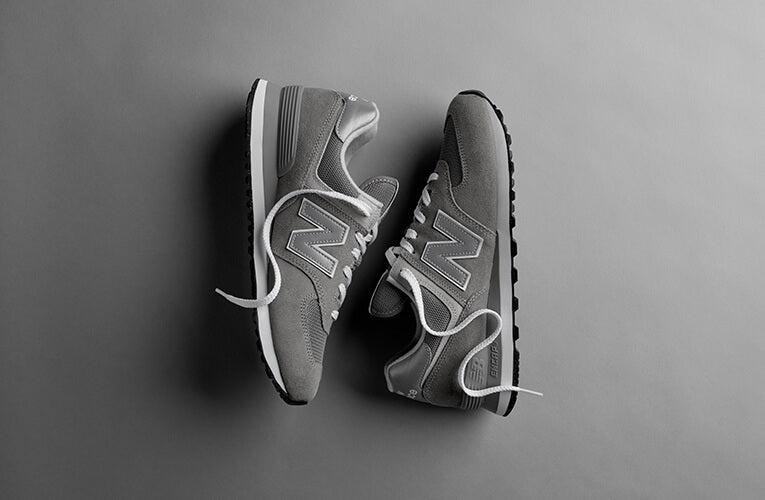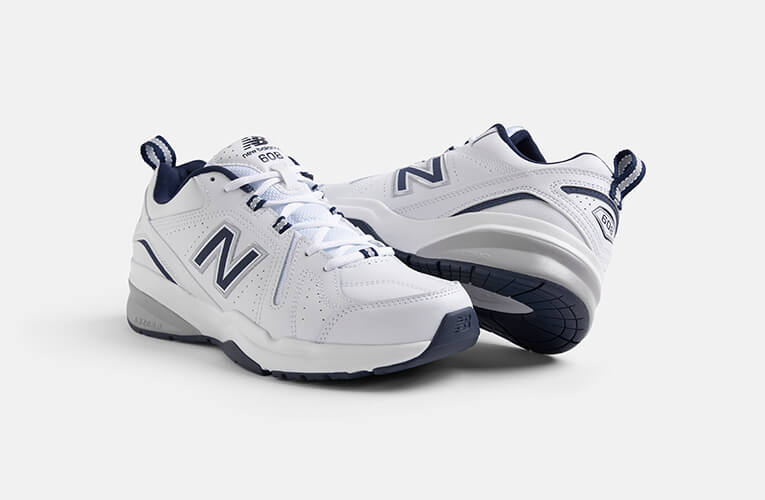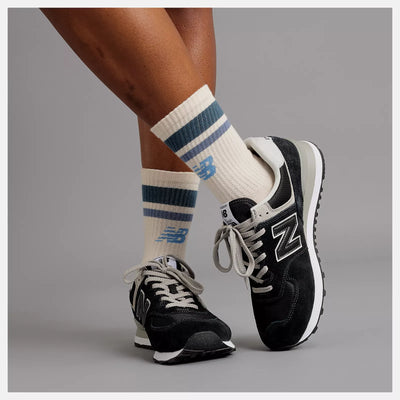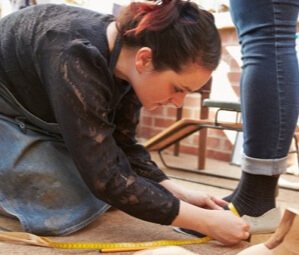Shoe for Hammer Toes
 |
 |
| Click here - Men's Shoes for Hammer Toes | Click here - Women's Shoes for Hammer Toes |

Hammer toes are a type of foot deformity where the joints on the second, third or fourth toes are bent. They are also called mallet toes, claw toes or retracted toes and are a common cause of foot discomfort.
Signs of Hammer Toes
The bend in the middle toe joint makes the affected toe or toes take on the shape of a hammer. In the early stages of this condition, hammer toes are flexible and can be corrected using relatively simple measures. If left untreated, the toes become fixed in the hammer-like position and may require surgery to put them back into place. Signs of hammer toe also include:
- One or more curling toes
- Thickening of the skin either above or below the affected toe or toes, along with the formation of corns or calluses
- Pain or discomfort in the toes or the ball of the foot or in the front of the leg; the pain may be especially noticeable when the toes are stretched out
- Difficulty finding shoes that are a comfortable fit
In the early stages of this foot problem, hammer toe is not immediately obvious. In many instances, it does not cause any immediate symptoms other than the claw-like shape of the affected toes.
Causes of Hammer Toes
Hammer toe is caused by a muscle imbalance in the foot or wearing shoes that don’t fit properly, as well as other factors. Muscles are present in pairs to straighten the toes. If a toe is bent and held in one position long enough, the muscles will tighten and will no longer be able to stretch out, even when a person is barefoot.
Shape of the Foot
You are more likely to develop hammer toes at some point if your second toe is longer than the first toe. People who have high-arched feet are also at higher risk for this condition as well.
Bunions and Hammer Toes
If you have a bunion, it can lead to the development of a hammer toe. A bunion is a bony lump that forms at the base of the big toe where it attaches to the foot. In many instances, it causes the big toe to push out of place and move toward the other toes on the foot. The big toe may overlap and crowd the smaller toes.
Too Tight or Improperly Fitted Shoes
Shoes that are too tight or improperly fitted that are worn repeatedly can lead to hammer toes. Fashionable shoes with a narrow toe box and/or high heels do give an elongated look to the shape of the foot, which is a desirable trait, especially for ladies.
How to Prevent Hammer Toes
In many instances, hammer toes can be prevented. You can avoid developing this foot condition by choosing the right shoes. Here are some recommendations:
- Avoid buying shoes with either narrow or pointed toes. Choose shoes with wide or boxy toes instead.
- Have your feet measured before you buy shoes and don’t buy a pair that is either too short for your foot or the wrong size.
- When determining whether a shoe is the right size, choose one that is one-half inch longer than your longest toe.
- Avoid wearing high-heeled shoes if possible. This style forces the foot forward, which squishes the toes in the front of the shoe. If you have to wear high heels, wear a pair of lower-heeled shoes the following day to give your feet a break from wearing that style in between wearings.
How to choose the right shoes for Hammer Toes
Finding the right shoes for hammer toes doesn’t mean you need to give up on the idea of finding stylish footwear. It is possible to find shoes that are comfortable for your feet that fit well that will help to prevent this condition or will not exacerbate an existing case of hammer toes.
The Wide Fit Shoes website has selection of shoes for men and women with hammer toes. Our men’s styles have the wide widths you seek for foot comfort. Whether you choose one of the slip-on, lace-up or adjustable Velcro-strap styles for business or casual wear, we have you covered. Our shoes are roomy enough in the toe area so that you won’t feel pinched or restricted at all when you put them on. Your comfort is assured.
Our ladies styles in shoes for hammer toes are just as comfortable as our men’s line of footwear. We can offer a wide fitting shoe in various widths to fit your foot properly and comfortably. Our styles have adjustable straps so that you can adjust the fit so that the shoes feel comfortable on your feet.
5 Treatment Solutions for Hammer Toe
Hammer toes is a condition in which a deformity occurs in the foot from toes being bent downward at the joints. The toes become shaped like claws causing what is commonly referred to as “claw toe.” This foot abnormality is often attributed to ill-fitting shoe wear, genetics, and pre-existing foot deformities such as bunions or flat feet. Those experiencing this condition are often confused on the methods of treatments available. Solutions for hammer toe relies on the underlying cause for the deformity and the severity of the condition. If you are suffering from a condition such as hammer toe, then it is wise to seek out medical assistance as there are various options for treatment.
-
Callus Removal
The formation of thick and very painful calluses on the ball of the foot often contribute to the effects of hammer toe. Before seeking out treatment from shoe inserts, doctors may need to remove these painful calluses from the foot so it may balance correctly. After the callus removal, there may be a need for orthotic shoe inserts.
-
Orthotic Shoe Inserts
Orthotic shoe inserts are the best treatment for those with flexible hammer toe. To determine if you have a flexible hammer toe, try to stretch the toe to a fully straight position. If the toe is unable to resume its straight shape, then you hammer toe is considered rigid. Shoe inserts will address the issue of flexible hammer toe by encouraging the toes to remain straight and releasing unnecessary pressure from the bottom of the foot. The cushion from the inserts will elevate the foot and reduce the pull on tendons. This will allow the toes to straighten over time.
-
Tendon Release Surgery
Those that find they can slightly bend their hammer toes, but are unable to get them fully straight are likely to consider tendon release surgery. This surgery is the least invasive and least painful of the hammer toe surgical options. This is because the doctor only make a small incision along the toe to cut the tendons that have tightened. This tightened tendon is what has been forcing the toe into a bent position. After the surgery the toe is able to straighten naturally and the cut tendon is able to mend and reform around the new toe position. There are only a few stitches required for the recovery of the tendon release surgery. Patients are often able to return home the same day as the surgery is conducted inside the podiatrist office with only the use of local aesthetics.
-
Arthroplasty Surgery
Arthroplasty surgery is a last resort option for the treatment of hammer toe. Arthroplasty surgery is for those that have no movement left in their hammer toes. The surgery will involve cutting both tendons and bones that are preventing the toe from moving properly. After the surgery the toe will have the ability to straighten on its own. However, during recovery the foot must remain bandaged for long periods of time to allow the various incision sites time to heal.
-
Joint Fusion Surgery
Joint fusion surgery is also a last resort option for those who are unable to move their hammer toes. This surgery option involves removing portions of the tendon and bone affecting the toe. This will enable two sections of the joint to become permanently connected. The joint is held in place temporarily by wiring the sections together or by use of a metal pin.
Sources
- www.londonfootandanklecentre.co.uk/conditions/toe_deformities.php
- www.widefitshoes.co.uk
- ic.steadyhealth.com/hammertoe-surgery-facts
- www.webmd.com/a-to-z-guides/understanding-hammertoes-basics
- www.nytimes.com/health/guides/disease/hammer-toe/overview.html
- www.foothealthfacts.org/footankleinfo/hammertoes.htm













